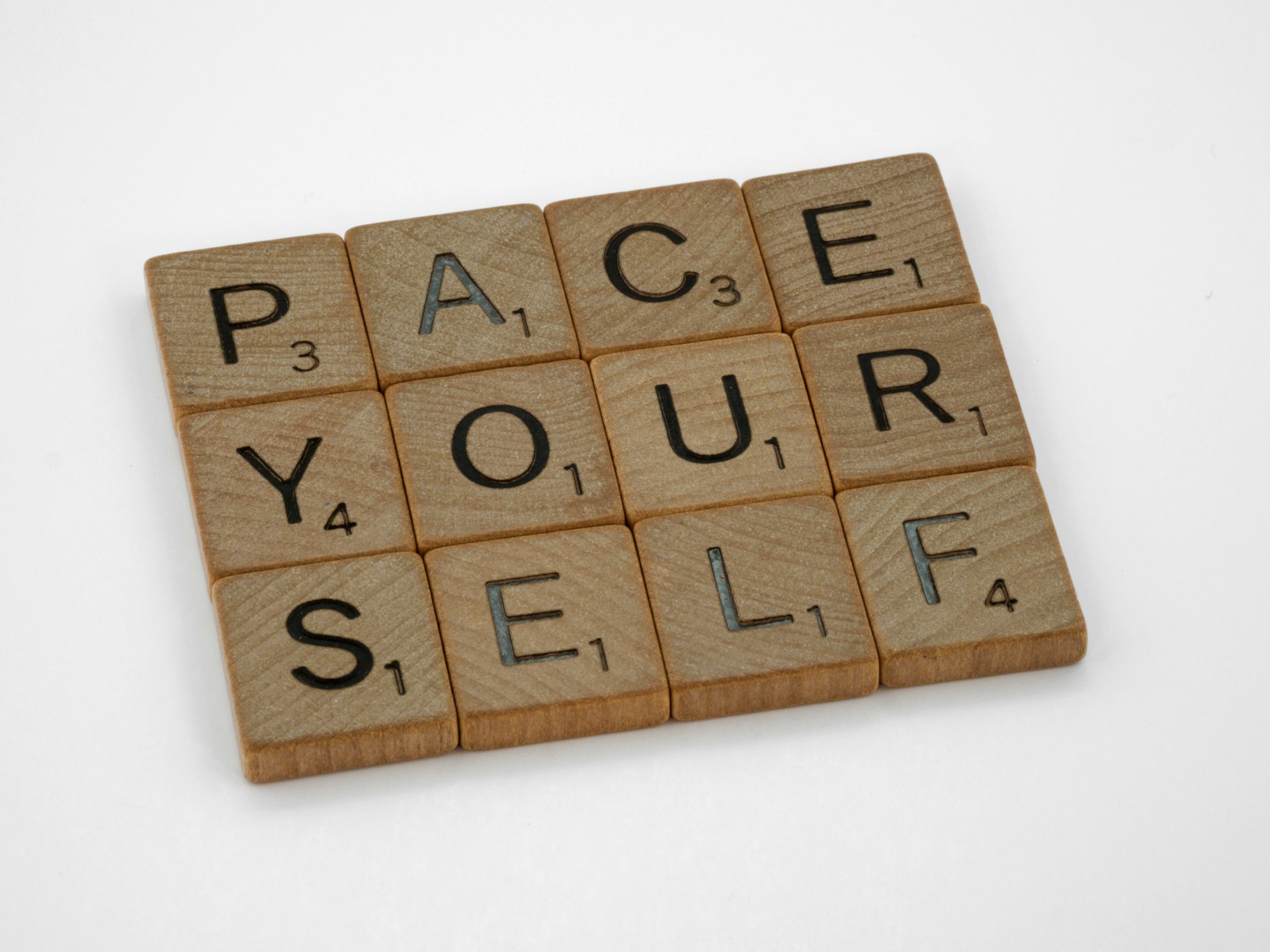Transforming Daily Life: Actionable Technology-Driven Lifestyle Habits for Better Health and Wellbeing

Photo by BRUNO CERVERA on Unsplash
Introduction: The Rise of Technology-Driven Lifestyle Habits
Technology has dramatically reshaped how we manage our health, productivity, and daily routines. From wearable fitness trackers to mental wellness apps, digital solutions offer actionable ways to create healthier habits, increase efficiency, and maintain balance. However, the same innovations can also pose challenges, such as screen addiction and tech overload. Understanding how to harness technology for positive lifestyle changes-and how to set healthy boundaries-is essential for anyone seeking to thrive in a modern, connected world.
Section 1: Building Healthy Habits with Technology
Digital devices and apps can make it easier to adopt and maintain healthy routines. For example, fitness trackers and smartwatches measure daily steps, heart rate, and sleep quality, helping users stay accountable to their goals. Most modern smartphones include built-in health monitoring features, and specialized apps offer reminders to hydrate, log meals, or take breaks from sedentary activity.
A study highlighted the effectiveness of wearable devices and apps in promoting physical activity among office workers, who are often at risk of a sedentary lifestyle. These tools measure progress, suggest personalized workout plans, and provide motivational feedback, laying the groundwork for sustainable habits [1] .
Actionable Steps:
- Choose a wearable fitness tracker or app that fits your needs and budget. Popular brands include Fitbit, Apple Watch, and Garmin.
- Set realistic daily goals for steps, exercise time, and hydration. Use your app’s reminders to stay on track.
- Integrate activity into your workday with prompts to stand, stretch, or walk.
Alternative Approaches: If wearable devices aren’t accessible, consider using your phone’s built-in health app or free online trackers. Manual logs and printed checklists can also help reinforce habits.
Potential Challenges: Device fatigue and data overload can undermine motivation. To avoid this, start with simple goals and avoid tracking too many metrics at once. Periodically review and adjust your tracking methods to keep them effective and enjoyable.

Photo by Yilmaz Akin on Unsplash
Section 2: Enhancing Sleep and Recovery through Digital Solutions
Sleep is often neglected in today’s fast-paced world, yet it is foundational to health and wellbeing. Technology offers tools to monitor sleep patterns, optimize routines, and promote restful nights. Smart sleep trackers analyze your cycles and suggest improvements, while apps provide personalized sleep hygiene advice [1] .
Many health apps can track your sleep duration and quality, sending reminders to wind down before bedtime and avoid screens late at night. Some even use gentle alarms that wake you during light sleep phases for a more refreshed start to the day [4] .
Step-by-Step Guidance:
- Download a reputable sleep tracking app such as Sleep Cycle, Pillow, or Fitbit Sleep.
- Use the app for one week to establish baseline data, then implement its recommendations for improving sleep hygiene.
- Gradually adjust bedtime routines based on insights. For example, set a consistent bedtime, reduce screen exposure before sleep, and create a calming environment.
Alternative Approaches: If you prefer not to use digital tracking, consider journaling your sleep schedule and noting factors that impact quality. Many sleep clinics offer downloadable resources for manual tracking.
Potential Challenges: Over-reliance on technology for sleep monitoring may increase anxiety about results. Use qualifying language and remember that apps are tools-not definitive medical devices. Consult a healthcare provider for persistent sleep issues.
Section 3: Supporting Mental Health with Mindful Tech Habits
While technology offers many benefits, excessive use can harm mental health. Issues such as increased anxiety, social isolation, and sleep disruption are common, especially among adolescents and young adults [5] . Mindful tech habits are essential for maintaining balance.
Monitor your screen time using built-in device features or dedicated apps like RescueTime, Moment, or Quality Time. Designate tech-free zones for meals, walks, and family time to encourage presence and reduce dependence [2] .
Implementation Steps:
- Set daily screen time limits using your device’s settings.
- Create tech-free periods, such as during dinner or before bed. Place devices out of reach during these times.
- Practice digital gratitude by using apps like Happier or visiting websites such as PositiveNews for uplifting content.
Alternative Pathways: For those experiencing tech-related stress, seek guidance from mental health professionals or support groups. Many local clinics and non-profits offer workshops or resources on digital wellness (search “digital wellness workshops” or contact your local community center).
Challenges and Solutions: Breaking tech dependence can be difficult. Begin with small changes and enlist friends or family for accountability. If apps are overwhelming, start with basic tracking and gradually add more features as needed.
Section 4: Digital Interventions for Lifestyle Management
Beyond fitness and mental health, technology is revolutionizing how we manage diet, quit harmful habits, and make healthier choices. Research shows that digital interventions-such as personalized videos, SMS reminders, and mHealth apps-can significantly improve nutrition, encourage smoking cessation, and increase overall wellbeing [3] .
For example, the Quit Genius app uses cognitive behavioral therapy to help users quit smoking, while food diary apps support healthier eating patterns. Activity monitors prompt users to move more, and multimedia interventions have proven effective in reducing dietary fat and improving fruit and vegetable intake.
Step-by-Step Guidance:
- Identify your primary lifestyle goal (e.g., quitting smoking, eating healthier).
- Research and download a reputable app tailored to your goal, such as Quit Genius for smoking cessation or MyFitnessPal for nutrition tracking.
- Set up app notifications and reminders to prompt daily action.
- Track progress, celebrate small victories, and adjust strategies as needed.
Alternative Approaches: If digital apps are not preferred, consider joining in-person support groups or using printable tracking sheets. Health clinics often provide educational materials and counseling for habit change.
Potential Challenges: Not all digital interventions are backed by strong evidence. Look for apps developed in partnership with health professionals or validated by research. If unsure, consult your doctor or search for reviews from reputable organizations.
Section 5: Productivity and Focus with Technology
Productivity apps and digital tools can help manage distractions, organize tasks, and boost concentration. Software like Freedom and Anti-social block distracting websites, while task management apps such as Todoist and Trello keep you focused on priorities [2] .
Establishing routines and leveraging technology to automate reminders and organize workflows streamlines daily life. However, it’s important to avoid over-reliance and periodically review your tech habits to ensure they serve your goals.
Actionable Steps:
- Identify your top distractions and use website-blocking software during work hours.
- Organize tasks with digital planners and enable smart reminders for deadlines.
- Review productivity data weekly to adjust strategies and set new goals.
Alternative Pathways: Analog planners and written to-do lists can be just as effective for some people. Experiment to find the best mix of digital and traditional tools for you.
Challenges and Solutions: Tech tools may create new distractions if not used mindfully. Set boundaries and periodically disconnect to reset focus.
Conclusion: Creating Sustainable Technology-Driven Habits
Technology offers powerful tools for building healthy, productive, and balanced routines. By choosing the right digital solutions, setting boundaries, and remaining mindful of your habits, you can transform your lifestyle for long-term wellbeing. For those seeking additional support, consult professional organizations, local clinics, or search for “digital wellness resources” in your area. Remember, technology should empower-not control-your daily life.
References
- [1] LitsLink (2023). How Technology Can Help You Lead a Healthy Lifestyle.
- [2] Mindful.org (2022). 7 Ways to Take Control of Your Tech Habits.
- [3] National Institutes of Health (2021). Digital Interventions on Healthy Lifestyle Management.
- [4] MemorialCare (2022). 4 Ways Technology Can Improve Your Health.
- [5] Institute for Integrative Nutrition (2023). 8 Digital Habits to Protect Your Mental Health.
MORE FROM mumsearch.com













